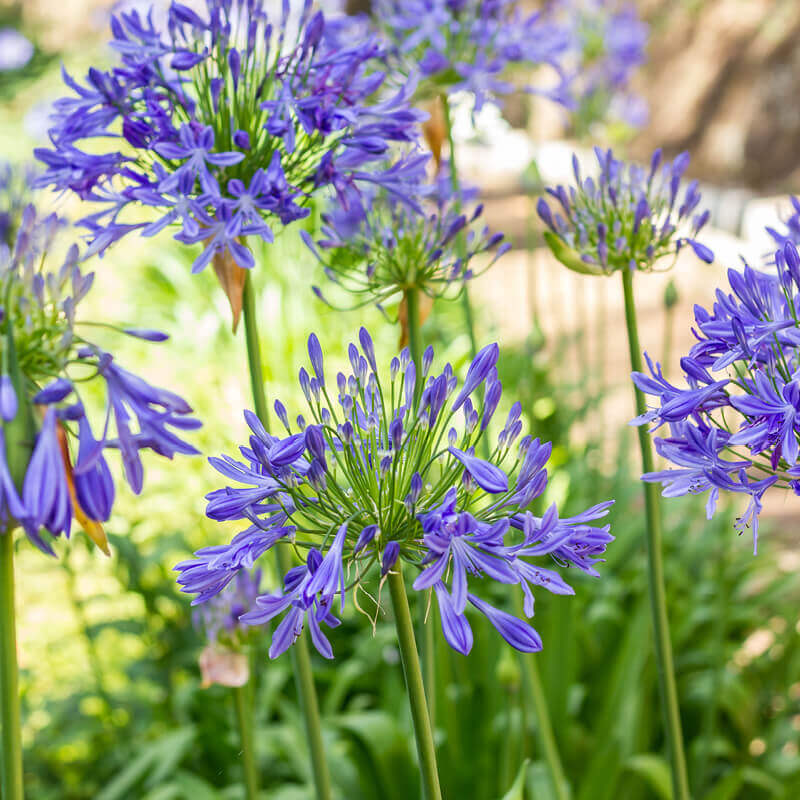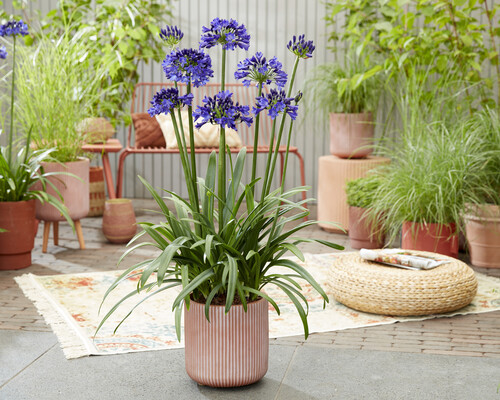Spectacular Agapanthus: Enhancing Your Yard's Beauty
Spectacular Agapanthus: Enhancing Your Yard's Beauty
Blog Article
Mastering the Art of Agapanthus Treatment: Essential Actions for Healthy Development and Lively Blooms
In the realm of cultivation, the cultivation of agapanthus stands as a fulfilling undertaking for those that seek to nurture these elegant blooming plants. With their striking blossoms and stylish vegetation, agapanthus has caught the interest of garden enthusiasts worldwide. Nevertheless, attaining ideal development and dynamic blooms requires a nuanced technique that incorporates various vital actions. From selecting the right variety to mastering pruning strategies, the trip in the direction of growing flourishing agapanthus plants is multifaceted and holds the key to opening the full possibility of these agricultural treasures.

Picking the Right Agapanthus Variety

When selecting the right Agapanthus variety for your garden, consider elements such as climate suitability, bloom color, and development practice. Agapanthus, typically referred to as Lily of the Nile or African lily, can be found in a selection of shades varying from shades of purple and blue to white. Select a flower color that complements your existing garden palette to develop an unified landscape. Furthermore, take into consideration the environment in your area to make sure the Agapanthus selection you pick can prosper in your details problems. Some ranges are much more tolerant of cool temperature levels, while others like warmer climates. Recognizing the development routine of various Agapanthus selections is critical for correct placement within your garden. Some ranges have a clumping growth habit, ideal for containers or borders, while others have an even more spreading nature, ideal for ground cover or mass plantings. By very carefully examining these aspects, you can choose the excellent Agapanthus range to enhance the elegance of your yard.
Ideal Growing Conditions
Considering the ideal ecological needs is important for effective Agapanthus cultivation. Agapanthus plants are sensitive to chilly temperature levels and need to be secured from frost throughout winter months.
To make certain healthy growth and vibrant blooms, plant Agapanthus bulbs at a deepness of concerning 2-4 inches and room them 8-12 inches apart. Including raw material, such as garden compost, to the soil can enhance water drainage and fertility, advertising durable origin development. Mulching around the base of the plants helps keep wetness and reduces weed development. Regular watering is critical, specifically throughout the expanding season, to keep the soil consistently wet however not waterlogged.
Watering and Feeding Tips
Keeping correct wetness levels and giving essential nutrients are crucial elements in the care routine for Agapanthus plants. When it involves watering Agapanthus, it is crucial to strike an equilibrium. These plants like continually moist soil however are vulnerable to root rot if overwatered. Throughout the growing period, water deeply when a week, ensuring the dirt is well-draining to stop waterlogging. In hotter environments or during durations of drought, even more regular watering might be necessary to keep the soil equally moist. Nonetheless, reduce watering in the winter months to stop water logged problems.
Feeding Agapanthus is important for advertising healthy and balanced growth and prolific blooms. Use a well balanced fertilizer, such as a 10-10-10 formula, in the early spring as brand-new growth emerges. By adhering to these watering and feeding tips, you can ensure your Agapanthus plants prosper and generate vibrant, lasting flowers.
Trimming Methods for Agapanthus
Pruning Agapanthus plants at the proper times and with appropriate techniques is important for keeping their health and promoting optimal development and blooming. The excellent time to prune Agapanthus is in late winter months or very early spring before new growth arises.
For flowered stems, wait up until the blossoms have actually withered and after that cut them back to the base. This not only tidies up the plant's appearance yet likewise urges the growth of brand-new blossom buds. Deadheading invested blossoms can likewise redirect the plant's energy into generating more blooms instead than establishing seeds. Nevertheless, if you want to collect seeds for proliferation, leave some flowers to fully grown and completely dry on the plant.
Keep in mind to use tidy, sharp tools to make specific cuts and decrease the threat of introducing illness. Agapanthus. Normal trimming will aid maintain your Agapanthus looking cool and healthy while ensuring a plentiful screen of lovely blooms
Taking Care Of Common Pests and Conditions
After making sure appropriate pruning techniques for Agapanthus, read the full info here it is necessary to deal with typical parasites and illness that can influence the health and wellness and vitality of these plants. One usual insect that influences Agapanthus is the Agapanthus gall midget.
In addition, Agapanthus plants can suffer from root rot if they are planted in improperly draining pipes soil. By being vigilant and taking prompt action against illness and insects, you can assist your Agapanthus plants flourish and produce lively blooms. Agapanthus.

Final Thought
Finally, understanding the art of agapanthus treatment entails picking the ideal variety, supplying suitable growing problems, appropriate watering and fertilizing, ideal trimming methods, and attending to common parasites and illness. By adhering to these crucial actions, you can ensure healthy and balanced development and dynamic blossoms for your agapanthus plants. Bear in mind to frequently keep track of and keep your plants to promote click for source their total health and long life.
To make certain healthy and balanced development and dynamic blooms, plant Agapanthus bulbs at a depth of regarding 2-4 inches and area them 8-12 inches apart. look at more info By following these watering and fertilizing tips, you can guarantee your Agapanthus plants prosper and generate lively, lasting blossoms.
One common insect that affects Agapanthus is the Agapanthus gall midge. Furthermore, Agapanthus plants can suffer from origin rot if they are planted in inadequately draining pipes dirt. By adhering to these important steps, you can make certain healthy and balanced development and vivid flowers for your agapanthus plants.
Report this page